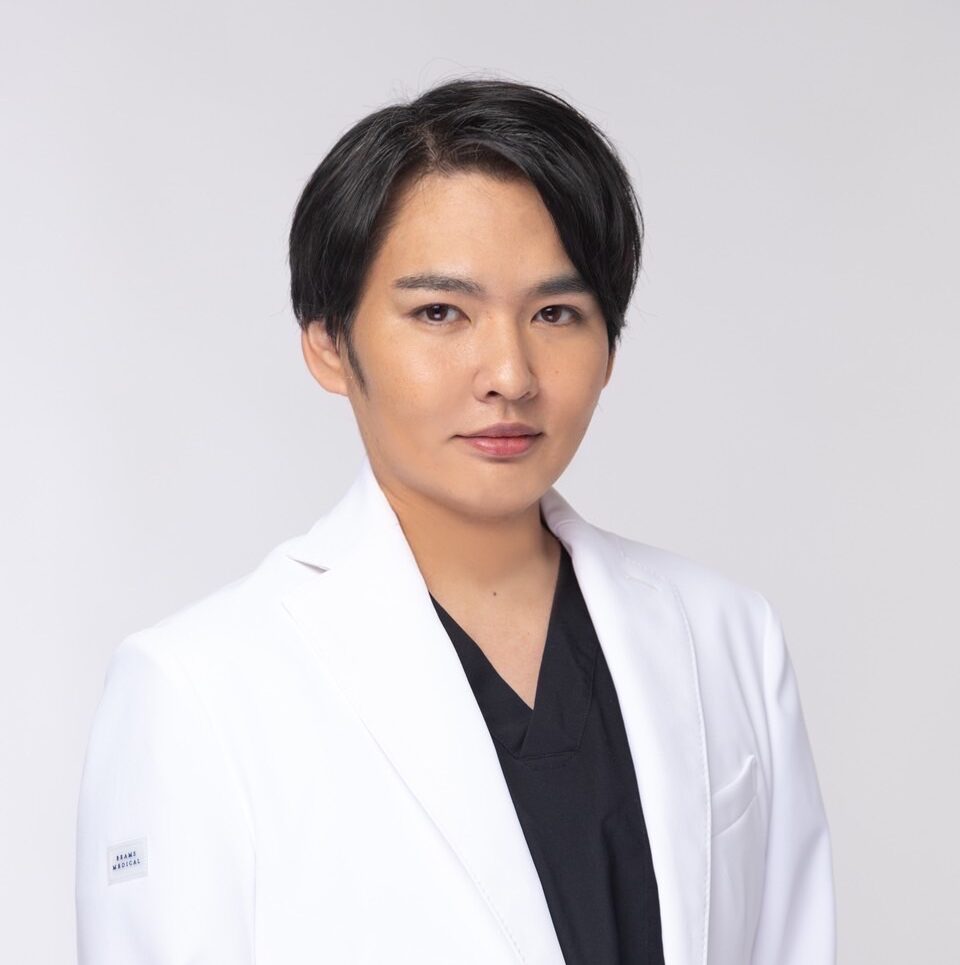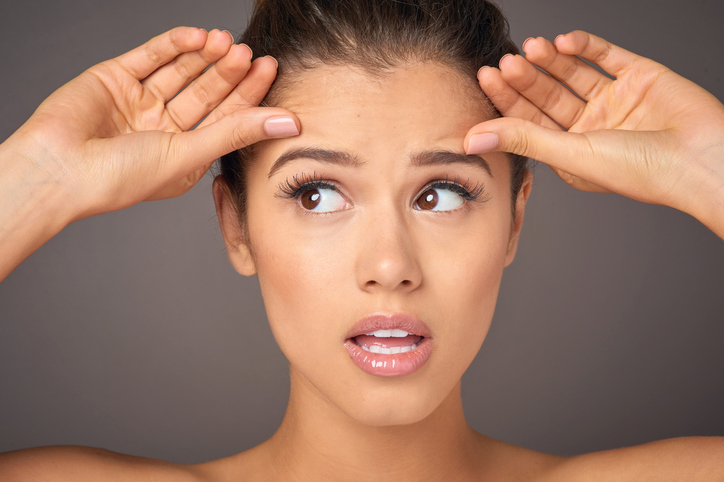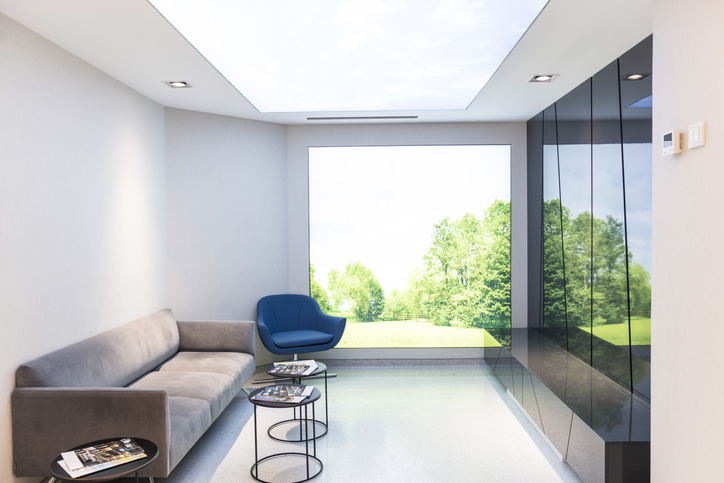Do you have any concerns or questions about whether the effects of Botox will wear off within 3 months? This is a common question that many people wonder about. This is a concern because it is a popular procedure. This article will explain in detail the duration of Botox.
We hope that this article will provide you with information on why Botox loses its effectiveness within 3 months, how to prolong its effectiveness, and the best time for your next Botox injection.
For those who are considering Botox treatments in the future, or have had Botox treatments but have not seen any results, it will be essential for you to receive a more satisfying Botox treatment and maximize the benefits of your cosmetic investment. We are here to support you in making wise cosmetic choices.

Graduated from the Faculty of Medicine, National Kumamoto University. After serving as the director of major beauty clinics in Japan, etc., he opened Aladdin Aesthetic Clinic in 2023. He is a professional in aesthetic medicine with a doctorate in anti-aging research and many years of experience. With the motto of "Toward the realization of cosmetic medicine without lies," he aims to be the "Only One" together with his patients.
- Treatment sites and objectives in Botox treatment
- Effects and progress after Botox injections
- What to watch out for and how to take care of yourself within 3 months after Botox treatment
- Side Effects and Risks of Botox Treatment
- Botox vs. other cosmetic treatments
- Frequently Asked Questions about Botox Treatment
- summary
Treatment sites and objectives in Botox treatment

Botox is one of the most widely used treatments in the field of cosmetic medicine. It is particularly effective in softening wrinkles by inhibiting muscle activity, but it has many other uses as well.
The most common treatment goal for people is the improvement of facial wrinkles. Botox is injected into the facial muscles and is particularly effective in reducing wrinkles at the corners of the eyes (bird's-foot wrinkles), forehead wrinkles, and wrinkles between the eyebrows (anger wrinkles). By softening wrinkles, a youthful appearance can be maintained.
Another popular Botox treatment before and during the summer is the improvement of excessive sweating. Botox is also used to treat hyperhidrosis, especially when injected into the palms of the hands, soles of the feet, and underarms, to inhibit the activity of sweat glands and reduce excessive sweating, Botox may be used for different purposes and symptoms.
At what age should I get Botox treatment?
Botox injections are generally performed on adults over the age of 18, the age group in which the elasticity of the skin begins to decline. However, for cosmetic purposes, many people start as early as their late 20s or early 30s, and in recent years there has been a trend to take measures while they are young. This is because this is the age at which the skin begins to age and wrinkles due to overuse of facial muscles begin to become more noticeable.
In this context, an increasing number of people use Botox for prophylactic purposes, which, if started early enough, can inhibit excessive movement of facial muscles and prevent the formation of wrinkles.
On the other hand, age is often not an issue in the use of Botox for medical purposes (e.g., to treat excessive sweating or TMJ disorder). Such treatments are determined by the physician, taking into account the patient's symptoms and overall health.
It is also important to communicate well with your specialist when using Botox, regardless of your age. Especially for cosmetic purposes, the patient should have a thorough understanding of the expected results and post-treatment management.
The effects of Botox are temporary and require regular treatments. The frequency will depend on the individual's constitution, the type of Botox used, the injection site, and the amount injected. Generally, it is recommended to have treatment every 3 to 6 months, but this will also be determined in consultation with the physician.
Effects and progress after Botox injections

Botox injections are commonly used to treat wrinkles and muscle spasticity. Botox prevents excessive muscle contraction by blocking signals from the nerves to the muscles. Botox is a very effective treatment and safe when used properly, but thorough communication with an expert physician is necessary to achieve the best results.
So how exactly does the process progress after injection?
Immediately after injection - Day 1
Immediately after Botox injection and up to the first day, a small amount of swelling and pain may appear at the injected site. However, this is temporary and usually subsides quickly.
Immediately after the injection, you should avoid rubbing or massaging the injection site vigorously. Lying down or exercising should also be avoided. These activities can cause the Botox to spread to the surrounding muscles and cause unexpected results.
2 to 3 days later
After two to three days, the Botox begins to act on the muscles. At this point, it may be difficult to notice visual effects such as fading of wrinkles, but some people do notice subtle changes as muscle movement is restricted.
1 to 2 weeks later
After one to two weeks, the effects of Botox are maximized. Wrinkles will become less noticeable, facial muscles will relax naturally, and the effect will be visually noticeable.
After 1 to 3 months
The effects of Botox generally last 3-6 months. However, depending on a person's constitution and the amount injected, the effect may begin to fade after about 3 months. Therefore, re-injection may be considered after 3 months.
After 3 months
When the effect wears off, re-injection is often considered. However, the timing of re-injection depends on the individual's constitution, lifestyle, and the purpose of Botox use, so consultation with a specialist is necessary.
The durability of the effects of Botox varies greatly from one individual to another. To extend the duration of the effect, it is best to follow your specialist's instructions. In particular, it is important to listen to your doctor's advice and take proper care of your skin, as your behavior immediately after the injection can have a significant impact on the durability of the effects.
What to watch out for and how to take care of yourself within 3 months after Botox treatment

Proper care after Botox treatment is most important, especially in the first 24 hours, but proper care is also required in the following months. To maintain skin health and maximize the benefits of the treatment, it is necessary to continue proper care, keeping in mind the following key points. If you notice anything unusual or have any questions, we recommend that you consult your physician immediately.
| time | Care and Attention |
|---|---|
| Immediately after treatment | (1) Avoid massage and friction, avoiding the injection site. (2) Avoid hot places such as exercise, hot yoga, and saunas. (iii) Avoid alcohol and blood-thinning foods and beverages. |
| 24 hours after treatment | (1) Do not lie down, keep your head up. (2) Avoid heavy exercise and strenuous activities. (iii) Avoiding pressure on the injection site. |
| 1 week after treatment | (1) Resume use of skin care products (as directed by physician). (2) Protect skin from strong sunlight. |
| 1 to 3 months after treatment | (1) Maintain a healthy lifestyle (well-balanced diet, adequate sleep, moderate exercise). (2) Ensure UV protection. (iii) Appropriate moisturizing to protect the skin from dryness. |
| After 3 months | (1) Schedule the next Botox injection. (2) Evaluate the results of the treatment with the physician. |
Proper skin care before and after Botox treatment is important to maximize the benefits of treatment and maintain skin health. Specific skin care products and procedures that are compatible with Botox treatments and those that should be avoided, as well as specific skin care examples and schedules, should be discussed thoroughly during a consultation to provide advice and a plan.
In addition, it is generally not recommended that women undergo Botox treatment during pregnancy or lactation. The main reasons for this are the lack of sufficient data on the safety of Botox and its potential impact on childbirth and lactation.
Side Effects and Risks of Botox Treatment

Although Botox treatments are generally considered safe, they do carry some side effects and risks. First, possible reactions at the injection site include swelling, pain, bleeding, bruising, and redness. These symptoms are temporary and often disappear spontaneously within a few days.
Second, some patients experience headaches after treatment. These headaches are usually mild to moderate and may persist for several days. However, these headaches are also often temporary.
In rare cases, Botox can diffuse from the injection site into the surrounding muscles, causing unintended weakening of the muscles. This can result in symptoms such as drooping eyelids, changes in the position of the eyebrows, and drooping corners of the mouth. However, these phenomena can be minimized by a professionally skilled physician.
Allergic reactions to Botox have also been reported. This is very rare and can cause symptoms such as breathing difficulties, hives, skin rashes and swelling, vomiting, and dizziness. In addition, in very rare cases, the injection site can become infected. This is a risk that rarely occurs if proper hygiene and techniques are used.
| Side Effects/Risks | Description. |
|---|---|
| Injection site reaction | May cause swelling, pain, bleeding, bruising, or redness at the injection site |
| headache | Mild to moderate headaches may occur |
| Diffusion of Botox | Botox can diffuse from the injection site into surrounding muscles, causing unintended muscle weakening |
| allergic reaction | Allergic reactions to Botox can occur and cause a variety of symptoms |
| infection | Injection sites can become infected, but this is a very rare situation |
The side effects and risks described above should be fully considered when an individual decides whether or not to undergo Botox treatment. And before undergoing treatment, one should always consult with a physician and fully understand the risks before making a decision.
Botox vs. other cosmetic treatments

Many other cosmetic treatments exist besides Botox, such as hyaluronic acid injections and laser treatments. Compare the effectiveness, applicability, cost, and duration of each treatment to determine which treatment is best for you.
Botox treatments are very popular cosmetic treatments because of their immediacy and non-invasiveness, but when compared to other cosmetic treatments, each has its own specific advantages and disadvantages. Below is a detailed comparison of Botox to other major cosmetic treatments (fillers, laser treatments, and chemical peels).
filler
Fillers are injected under the skin to add volume and fill in wrinkles and furrows. Fillers, such as hyaluronic acid, are immediate and the effect usually lasts 6 to 18 months. Botox, on the other hand, reduces wrinkles by temporarily inhibiting muscle movement, and its effects typically last 3-6 months.
laser therapy
Laser therapy is used to correct skin surface irregularities and lighten pigmentation. This may improve the overall health and elasticity of the skin because some lasers reach deeper layers of the skin and stimulate collagen production. Botox, however, does not address this type of skin improvement.
chemical peeling
Chemical peels peel off the superficial layer of skin to promote the growth of new skin cells and improve the skin's tone and texture. This treatment is effective in addressing surface skin problems, but like Botox, these treatments act directly on the facial muscles and do not reduce wrinkles or furrows.
| treatment | Main use | Duration of effect | feature |
|---|---|---|---|
| Botox | Reduction of facial wrinkles | 3-6 months | Temporarily inhibits muscle movement |
| filler | Additional volume, filling in wrinkles and grooves | 6-18 months | Injected under the skin to add volume |
| laser therapy | Improvement of skin tone and texture | variable | Reaches deeper layers of skin and promotes collagen production |
| chemical peeling | Improvement of skin tone and texture | variable | Exfoliates the surface layer of skin and promotes the growth of new skin cells |
Frequently Asked Questions about Botox Treatment
Apart from the information explained above, we have compiled a list of frequently asked questions about Botox treatment. They are as follows
Q1: Is Botox treatment painful?
A: Botox injections are generally very painless. This is because the needle used is very fine and the injection volume is small. However, the pain is felt on an individual basis. If necessary, a local anesthetic cream can be used.
Q2: Will Botox impair my natural facial expression?
A: Properly injected Botox reduces wrinkles by relaxing some of the facial muscles, but allows the face to maintain its natural expression. However, excessive Botox injections can restrict facial movement. This can cause a "frozen" face or an unnatural appearance.
Q3: Will my wrinkles be worse after the Botox wears off?
A: When Botox is no longer effective, wrinkles return to their pre-injection state, but wrinkles are generally no worse than before when Botox wears off. However, new wrinkles may develop over time if Botox treatment is interrupted.
Q4: Can Botox be used on men?
A: Yes, Botox can be used on men. In fact, men also use Botox to reduce wrinkles and facial muscle tension.
Q5: Will there be any problems in my daily life after Botox treatment?
A: Botox treatment is usually a nonsurgical procedure with little or no downtime, so many people can return to their normal activities the same day they receive treatment.
Q6: How long does a Botox injection take?
A: The Botox injection itself usually takes only a few minutes. However, the entire process, including discussion of the treatment plan, application of anesthetic cream (if needed), and post-treatment care instructions, typically takes 30 minutes to an hour.
summary
It is important to understand the effects and care of Botox within the first three months after Botox injection treatment, and the timing and precautions for re-treatment should be input in advance. We hope that the information we have provided here on the general areas of Botox use, trends in age groups, durability of effects, post-treatment care and precautions, as well as side effects and risks, will be of value to you when considering Botox treatment in the future. We hope this information will help you make a healthy and confident choice, as well as an informed aesthetic decision.
At Aladdin Aesthetic Clinic, based on our many years of experience in cosmetic medicine and cosmetic dermatology and the knowledge of our doctoral degree, we provide counseling that aims to be "only one", offering the best treatment for each person we meet. We offer only the necessary treatments without any unnecessary information or suggestions.
Feel free to use our official LINE account for 24-hour counseling and reservations. Please feel free to contact us for free counseling for the first time or if you have any concerns.





